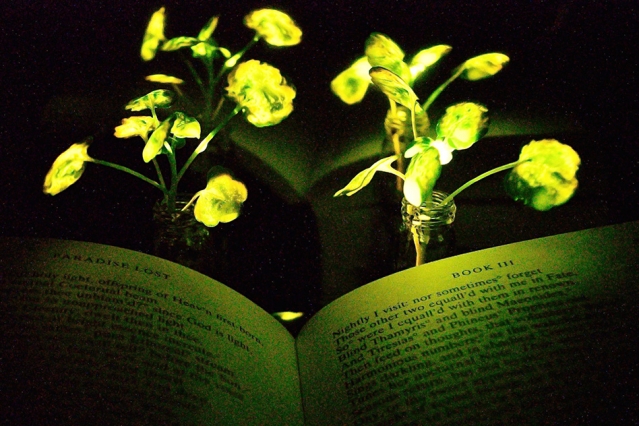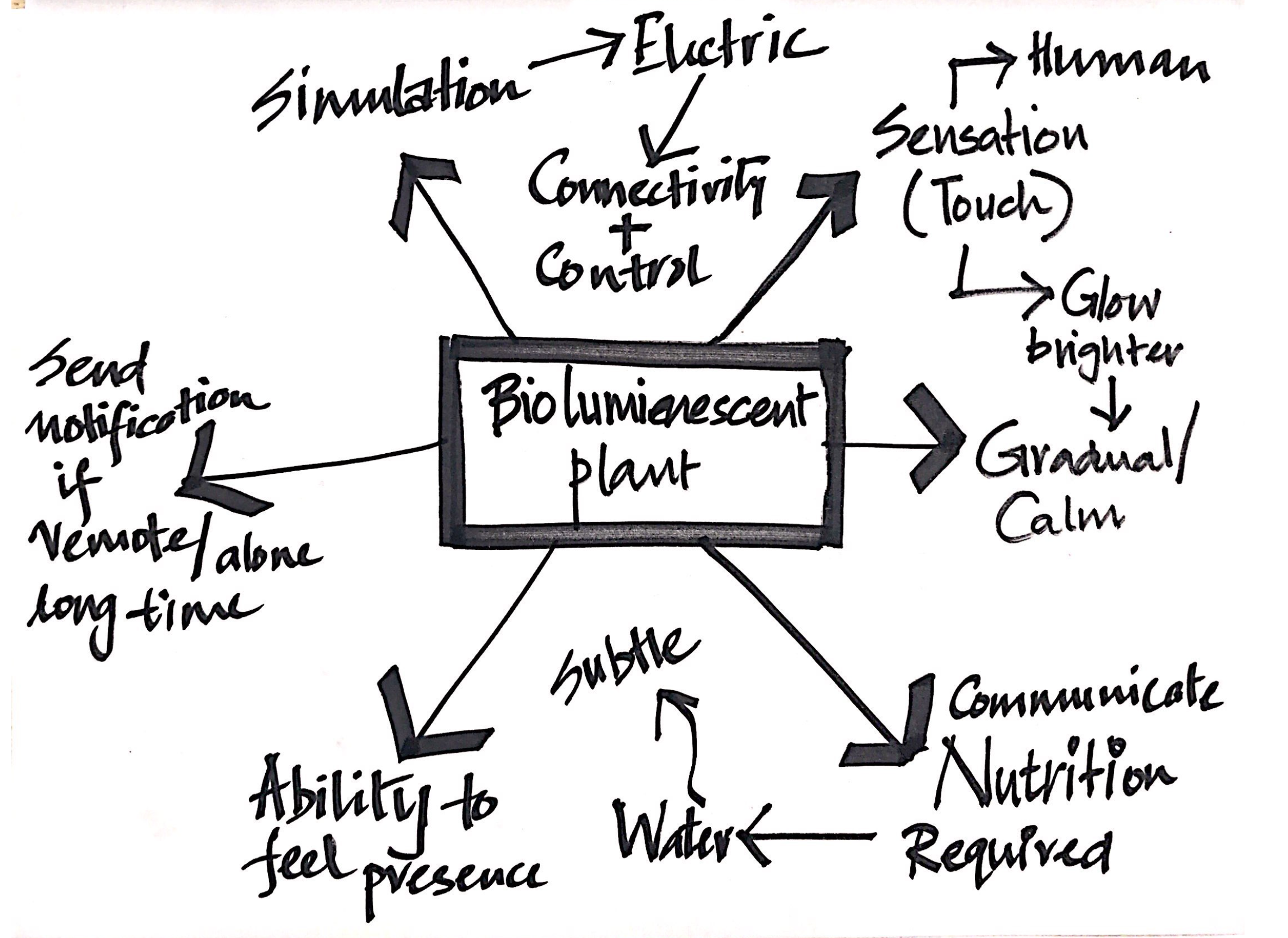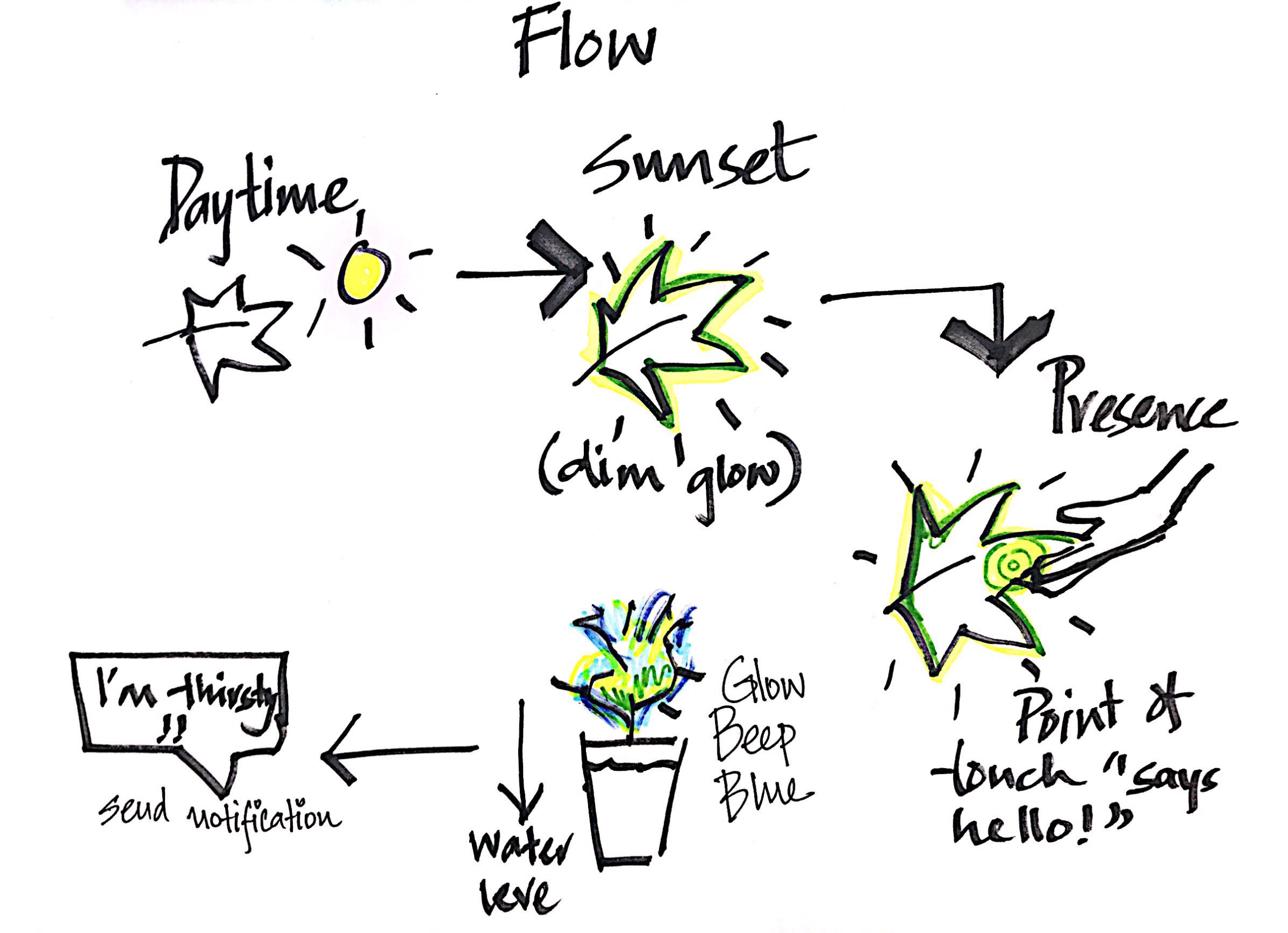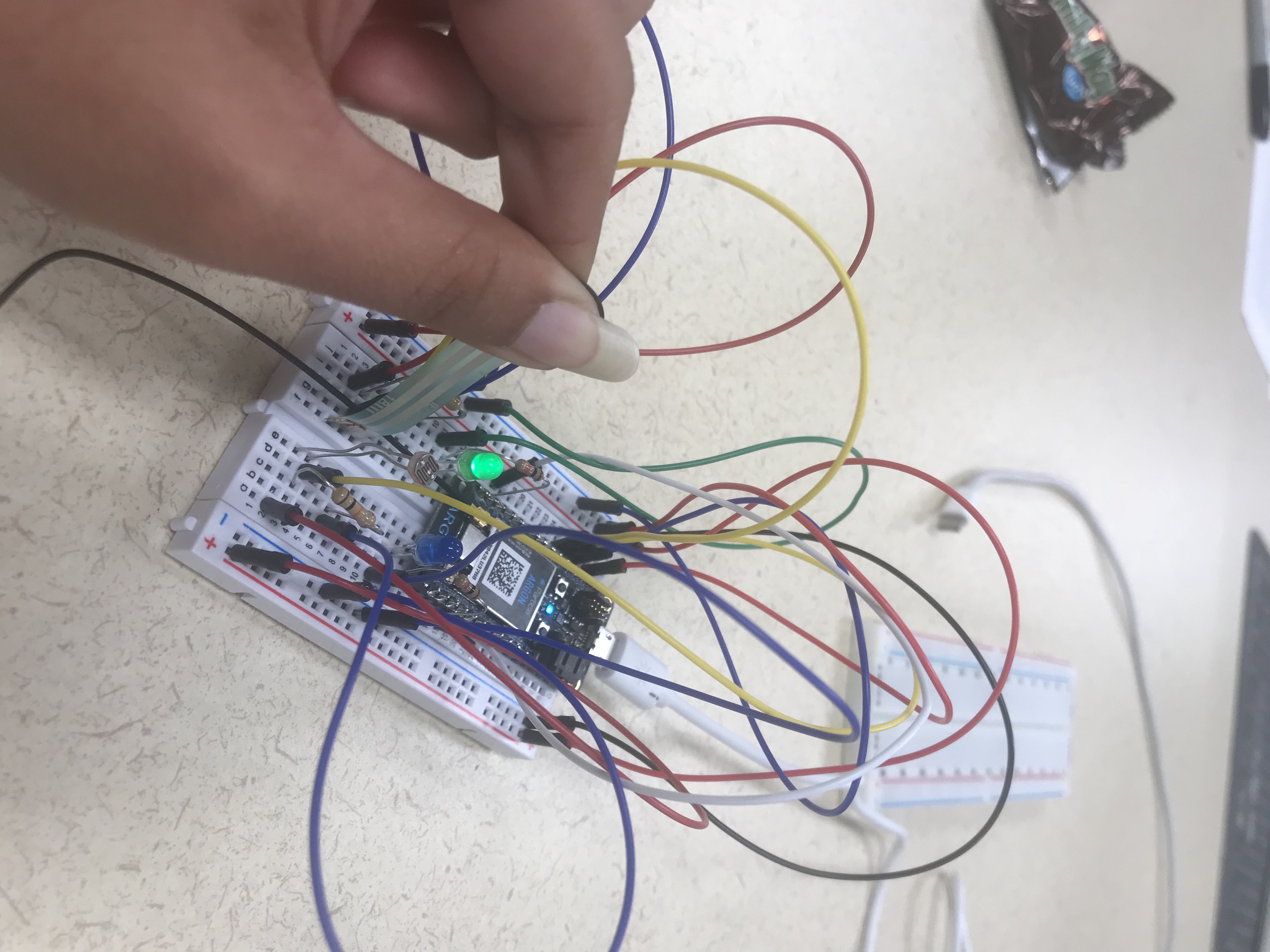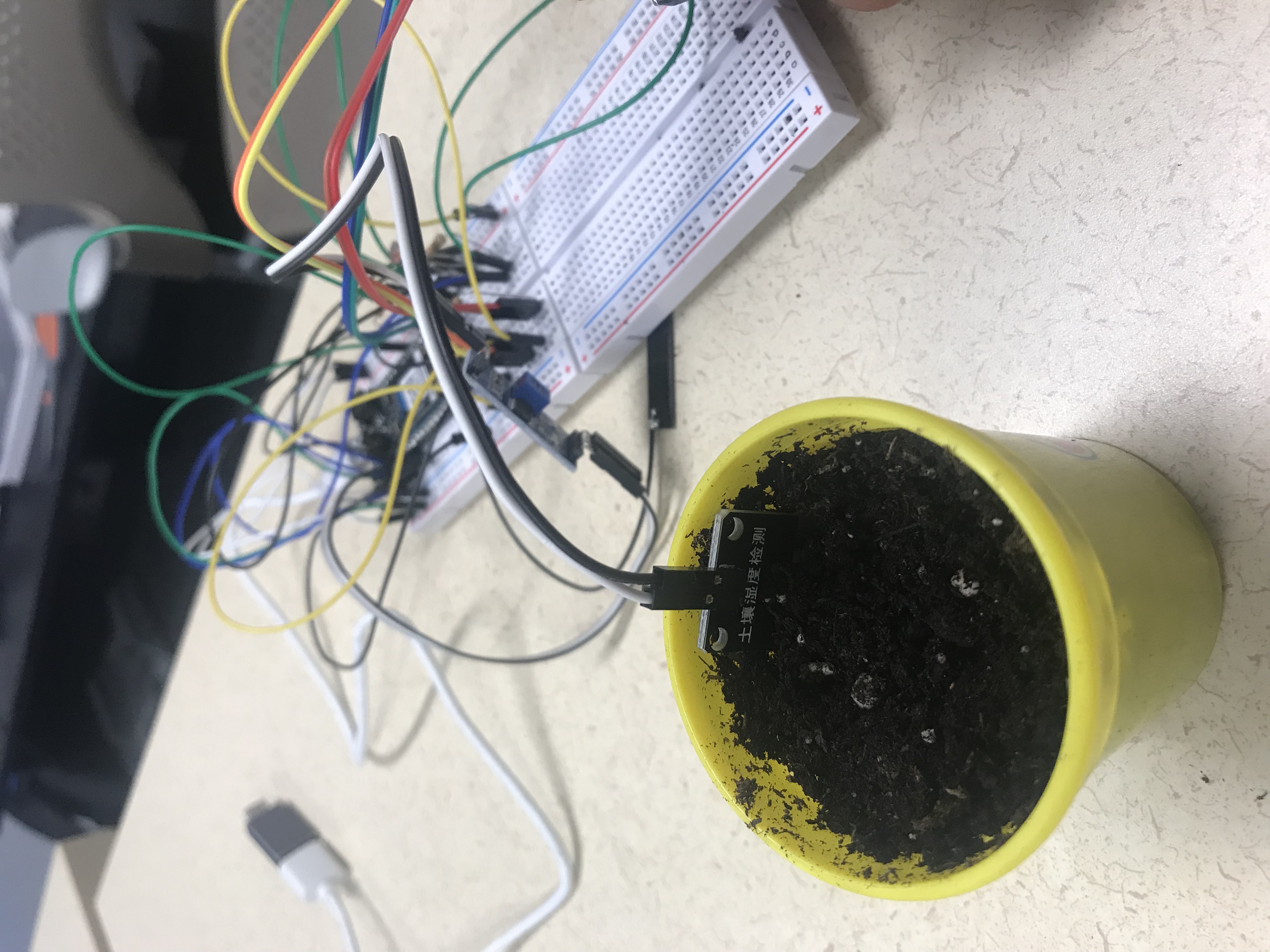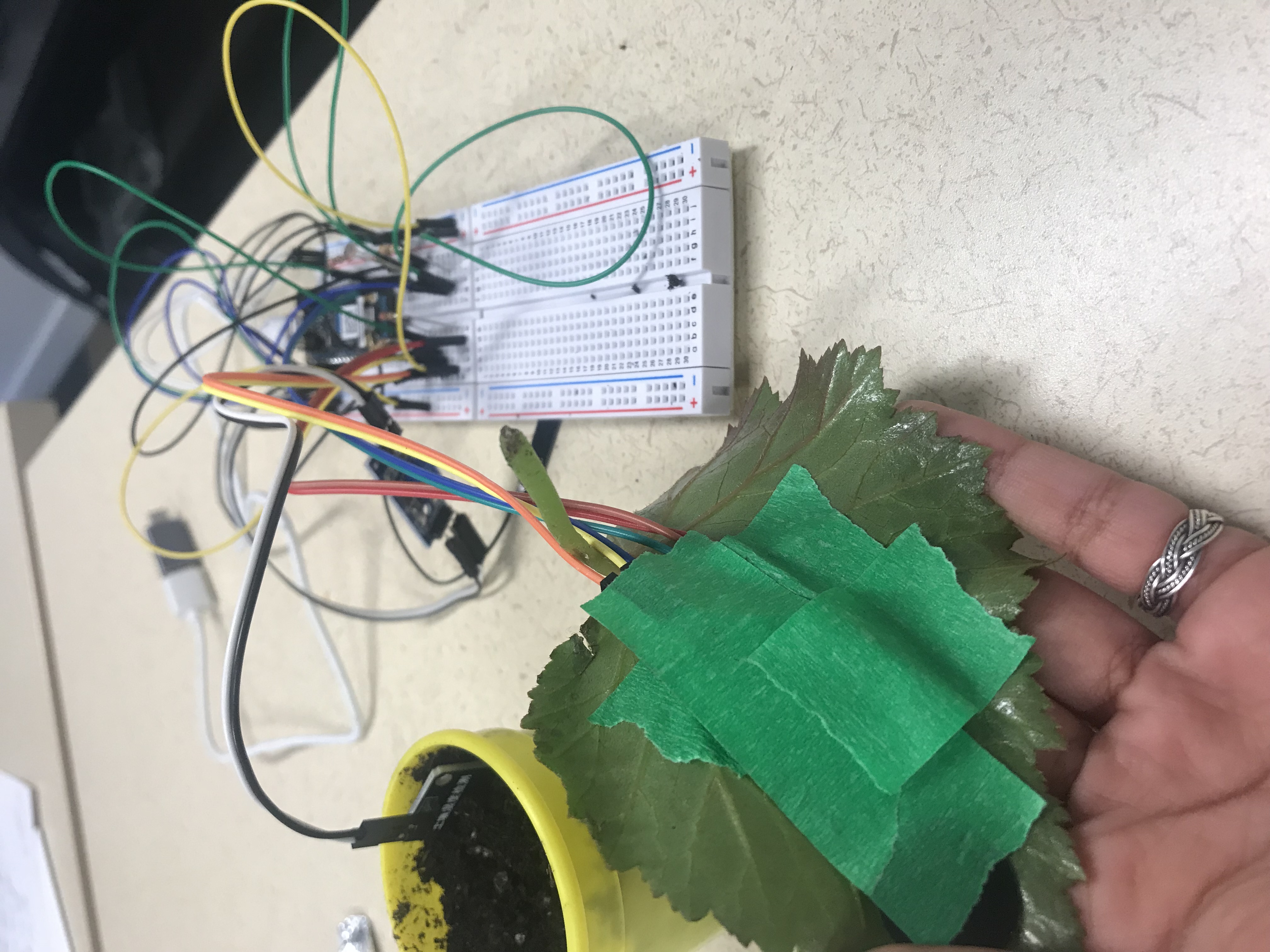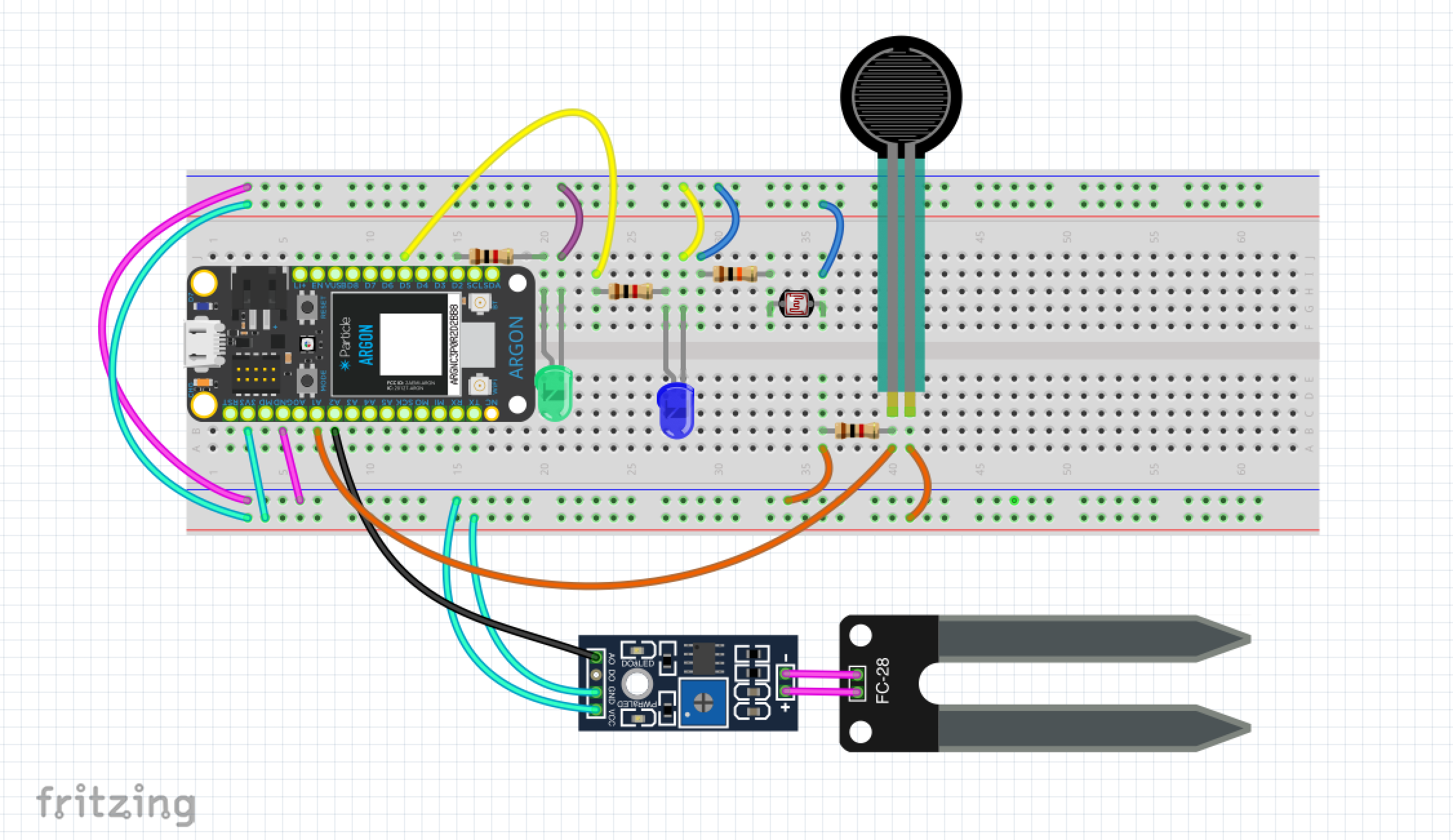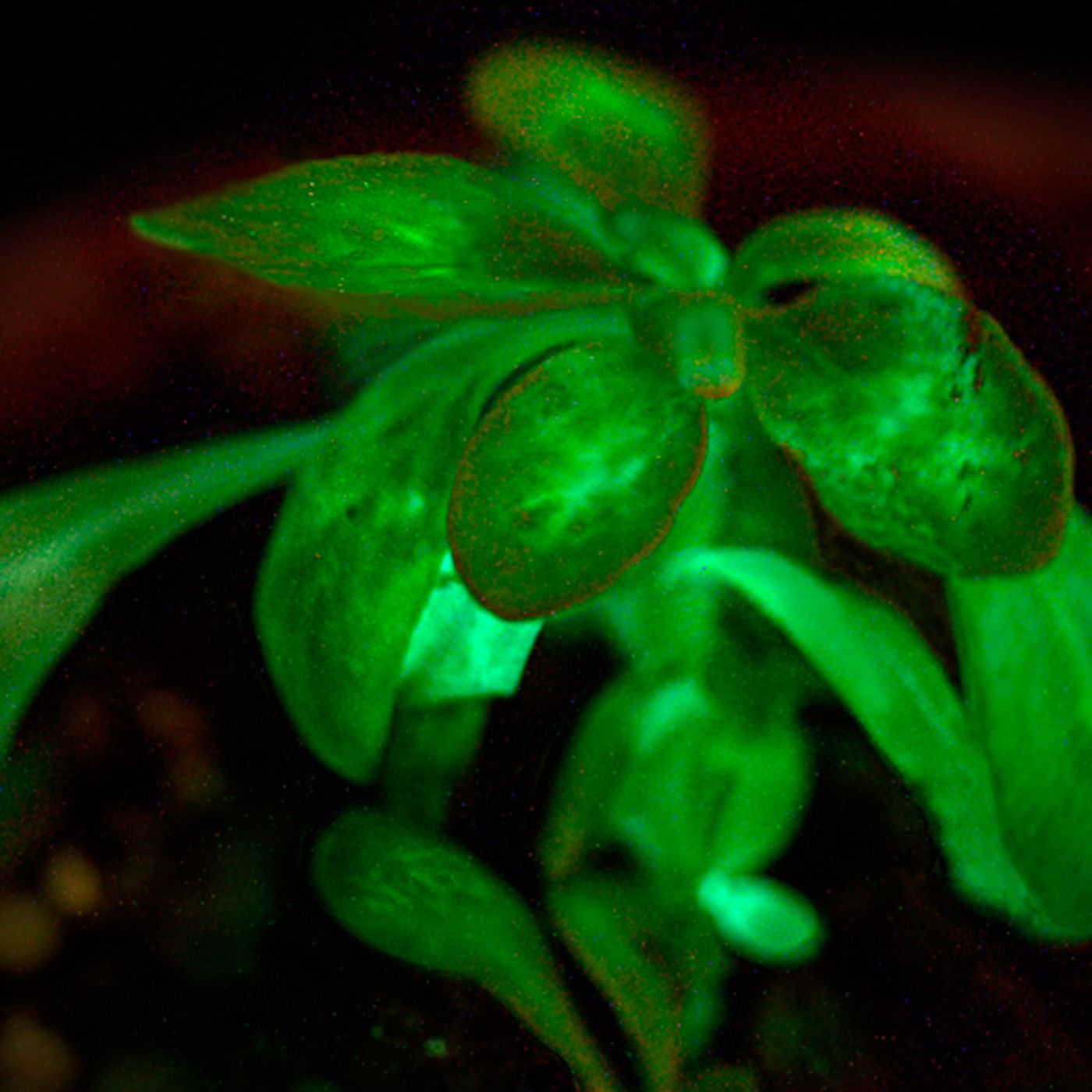Approach
Looking for inspiration along the lines of glowing plants, I came across the above article where I found a project led by MIT engineers who by embedding specialized nanoparticles into the leaves of a watercress plant, induced the plants to give off dim light for nearly four hours. They believe that, with further optimization, such plants will one day be bright enough to illuminate a workspace. This technology is currently progressing as a crowd-funded kickstarter project.
If trees form an element of our urban spaces in the future that can be responsive to our interactions with them, glow and provide light, respond and connect with other trees, plants and humans through the internet, it would indeed create an amazing experience to be in natural urban environments, being under the trees at night time!
From this point, I imagined an interconnected network of plants and trees that communicate with humans in natural, subtle and elegant ways. The idea is to simulate the experience of interacting with bioluminescent plants as a supplement to the ongoing research. I also wanted to incorporate a sense of live connection, taking inspiration from the movie Avatar. The way the plant acts as a source of light for us could be ambient and yet the control of that ambience would also be an important component of the design
